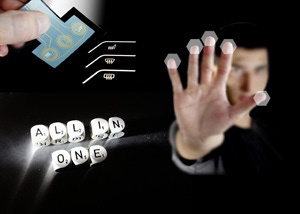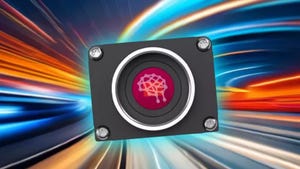December 3, 2010

Electroactive polymers can now be used in controllers forgaming devices, allowing users to feel mechanical movements that correspond toactions in the game.
"The gaming industry is showing tremendous interest to startintroducing this to bring a new level of reality to games," says DirkSchapeler, CEO, Artificial Muscle,Inc. of Sunnyvale, CA.
Gamers can feel dice rolling around, simulating action on ascreen or feel a tactile sensation when a ball hits a wall or falls into theholes of a labyrinth. The devices are called "haptic" actuators, referring tosense of tough transferred to a user.
The technology is based on a thin layer of dielectricpolymer film placed between two conductive electrodes. A voltage is appliedacross the electrodes, causing the electrodes to attract each other. This triggersa contraction in thickness and expansion in surface area. The electrical energyis transformed into mechanical movement without any friction losses, such asthose in electromagnetic motors, enabling the design of highly energy-efficientsystems.
Forty-six patents have been issued to cover the technology.
One of the early patentsdescribes how electroactive polymers can be pre-strained more than 200 percent toimprove conversion from electrical to mechanical energy. The polymers arepre-strained via mechanical stretching.
Haptic Actuators Energize Video Games |
The technology was developed by scientists at SRIInternational who say they began looking at pre-strained electroactive polymersbecause of cost or mechanical limitations with other materials than can transformelectrical energy to mechanical energy. These include piezoelectric ceramics,such as lead zirconium titanate (PZT).
Key properties for polymers that work well as dielectricelastomers are high electrical breakdown strength, a low modulus of elasticity forlarge or small deformations and a high dielectric constant.
Polymers described as suitable by SRI in another patentare CF19-2186 silicones from NuSil Technology; HS3 silicones from Dow Corning and4900 VHB acrylics from 3M Corp.
One of the most common applications for electroactive polymersis in robots. That's why the technology is often referred to as artificialmuscles. They can also be used as actuators and sensors in other fields, suchas small pumps in medical devices.
SRI spun out its technology into Artificial Muscle Inc. in2004. The company was acquired by Bayer MaterialScience in March becausecommercialization will require development of high-performance filmmanufacturing technology, a specialty of Bayer MaterialScience.
About two years ago, Artificial Muscle began to leverage itstechnology to create the Reflex brand of haptic actuators which target consumerelectronics including smartphones and other portable electronics, computerperipherals, gaming controllers, touchpads, POS kiosks, industrial controls andcasino gaming machines.
AMI offers two versions: a Moving Touch Sensor Design and aBattery Shaker Design. The Moving Touch Sensor Design uses a Reflex HICActuator to provide a direct tactile response to the user by moving the touchsurface. The HIC can be mounted to the back of the touch sensor or the LCD. Thethin profile is designed to add minimal thickness to the LCD and touchscreenstack.
The Battery Shaker Design uses a Reflex HIC Actuator to movethe battery as a mass to provide feedback that can be felt in a user's hand.This provides the same haptic feedback as the Moving Touch Sensor design, butdoes not require the complexity of external moving parts.
"Industry research indicates that gamers place greater valueon haptics in games with more high-fidelity effects per second," Schapelersays. "With our technology you can do more than just button clicks, you cancreate a realistic feeling into games to heighten the user experience."
About the Author(s)
You May Also Like






